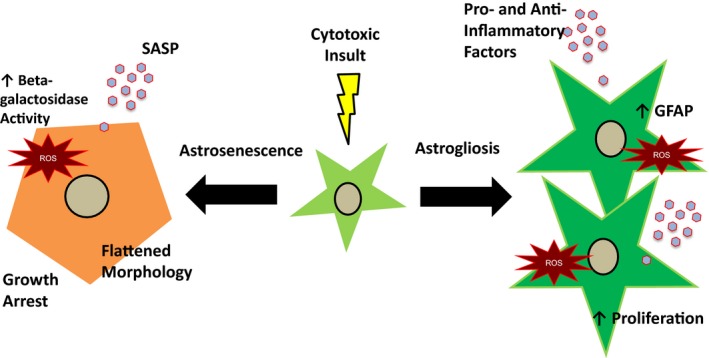Figure 2.

Comparison of astrocyte senescence (astrosenescence) and astrogliosis. In response to stress, there are several possible pathways that an astrocyte may undergo. With astrogliosis, an astrocyte becomes hypertrophic with enlargement of the cell body and processes. There is an upregulation of the intermediate filament GFAP and the secretion of many pro‐ and anti‐inflammatory cytokines, chemokines, and growth factors. With more severe astrogliosis, there is also increased proliferation and overlap of astrocytic domains. Astrocyte senescence involves growth arrest and enlargement with flattened cell morphology. Senescent astrocytes have increased lysosomal mass which results in increased beta‐galactosidase activity and they have a pro‐inflammatory profile of cytokines, chemokines, and growth factors that can be controlled by NF‐κB known as the senescence‐associated secretory phenotype
